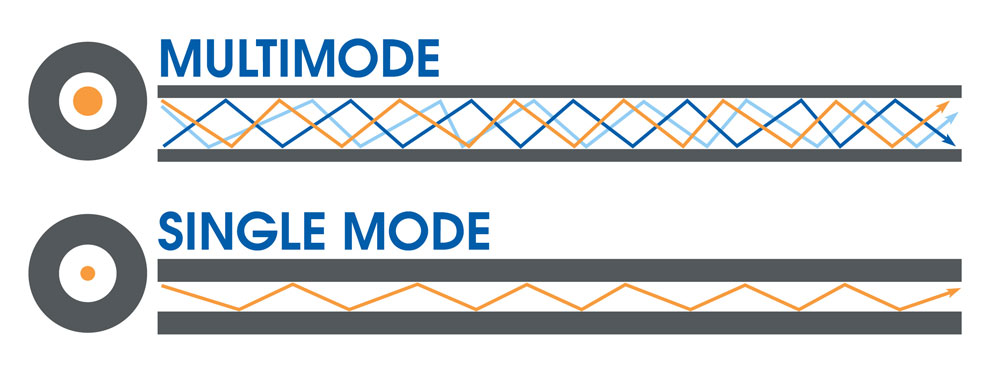Just a few blogs before, AiNET wrote a blog explaining what fiber networks are and what different advantages it provides. However, we will explain it to you once again to make it easier for you.
Fiber network, also known as fiber-optic communication, is a method where information is transformed from one point to another, in a very fast speed (as fast as 70% the speed of light). This transmission happens in the form of pulses of infrared light and happens through optical fiber. Fiber networks are considered to be one of the most reliable internet connections. In addition, they are said to be the best for upload bandwidth. It is known that fiber internet reaches as fast as 940 to 1000 Megabits per second (Mbps).
The Different Types:
Now that we know what fiber networks are, what are the different types? To start with, there are two basic and commonly known fiber types. Each providing a unique purpose the types of fiber optic cables are:
- single mode
- multimode
The three different types of fiber cables vary differently. Starting from their construction way to the benefits they provide. In our previous blog about fiber network, we mentioned that the fiber networks are as thin as the strands of your hair.

1- Single-mode Fiber Network
Only deriving the explanation from its name, single mode fiber cable is a single strand that has a diameter of maximum 10 microns. Do not be fooled by its narrow diameter, a single mode fiber can carry, compared to multimode, a higher bandwidth (which we will explain next). Single mode fiber networks also have other names, for example mono mode fiber and uni-mode fiber. When using a single mode fiber network only one cable is needed, and it travels a much longer distance that goes up to 100km! Now you may look at this in an optimistic way, however, keep in mind that electronics like this cost much more.
2- Multimode Fiber Networks
A multimode fiber network carries multiple light rays. Due to its wide diametrical core, multimode fiber networks are able to carry multiple modes of light. It is no surprise when I tell you that this creates the ability for more data to pass through in a period of time. Now of course, the transmission of more data in a given time is beneficial. However due to the high dispersion rate the quality decreases over a certain distance.
To summarize the difference between these two; A single-mode fiber network is mostly used for longer distances. Whereas a multimode fiber network is used for shorter distances (only 400 m).
If you want to learn more, you know where we are. Visit AiNET and learn more!

Good day! I just wish to give you a huge thumbs up for your excellent information you have got here on this post. I am coming back to your blog for more soon. Good day! I just wish to give you a huge thumbs up for your excellent information you have got here on this post. I am coming back to your blog for more soon.